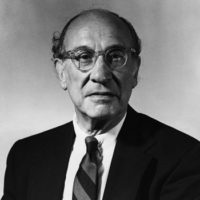
Louis Sokoloff
National Institute of Mental Health
For developing a noninvasive glucose analogue-based method for mapping brain function, paving the way for the development of PET scanning.
This is an unprecedented achievement that contributes to the basic understanding and diagnosis of brain diseases.
Dr. Sokoloff's brilliant contributions constitute a prime example of a bridge that leads from basic laboratory research to clinical application that can benefit literally millions of people everywhere.
The Sokoloff method has facilitated the diagnosis, understanding, and possible future treatment of such disorders of the brain as schizophrenia, epilepsy, brain changes due to drug addiction, and senile dementia.
His inventive technique involves measuring the brain's utilization of glucose, since glucose is the primary fuel for the central nervous system. But since glucose itself metabolizes too quickly for adequate study, Dr. Sokoloff initiated the use of an analogue for glucose, called 2-deoxy-D-glucose (2-DG). This analogue differs infinitesimally from glucose itself, but can be trapped in brain tissue long enough for chemical analysis, thus serving as a marker for central nervous system metabolism.
The technique has paved the way for positron emission transverse tomography (PETT) and the clinical application of Dr. Sokoloff's research. PETT, used in a scanner, produces for the first time vivid color images showing glucose utilization in the living, functional human brain and central nervous system.
By thus photographing various areas of the brain, scientists can now pinpoint the precise spot and chemistry of an actual or incipient brain tumor or other abnormality, and so determine the course of optimal treatment.
To Dr. Louis Sokoloff, whose research has uniquely contributed to our basic knowledge and diagnosis of brain diseases—problems for which scientists have sought the answers for decades—this 1981 Albert Lasker Clinical Research Award is given.
